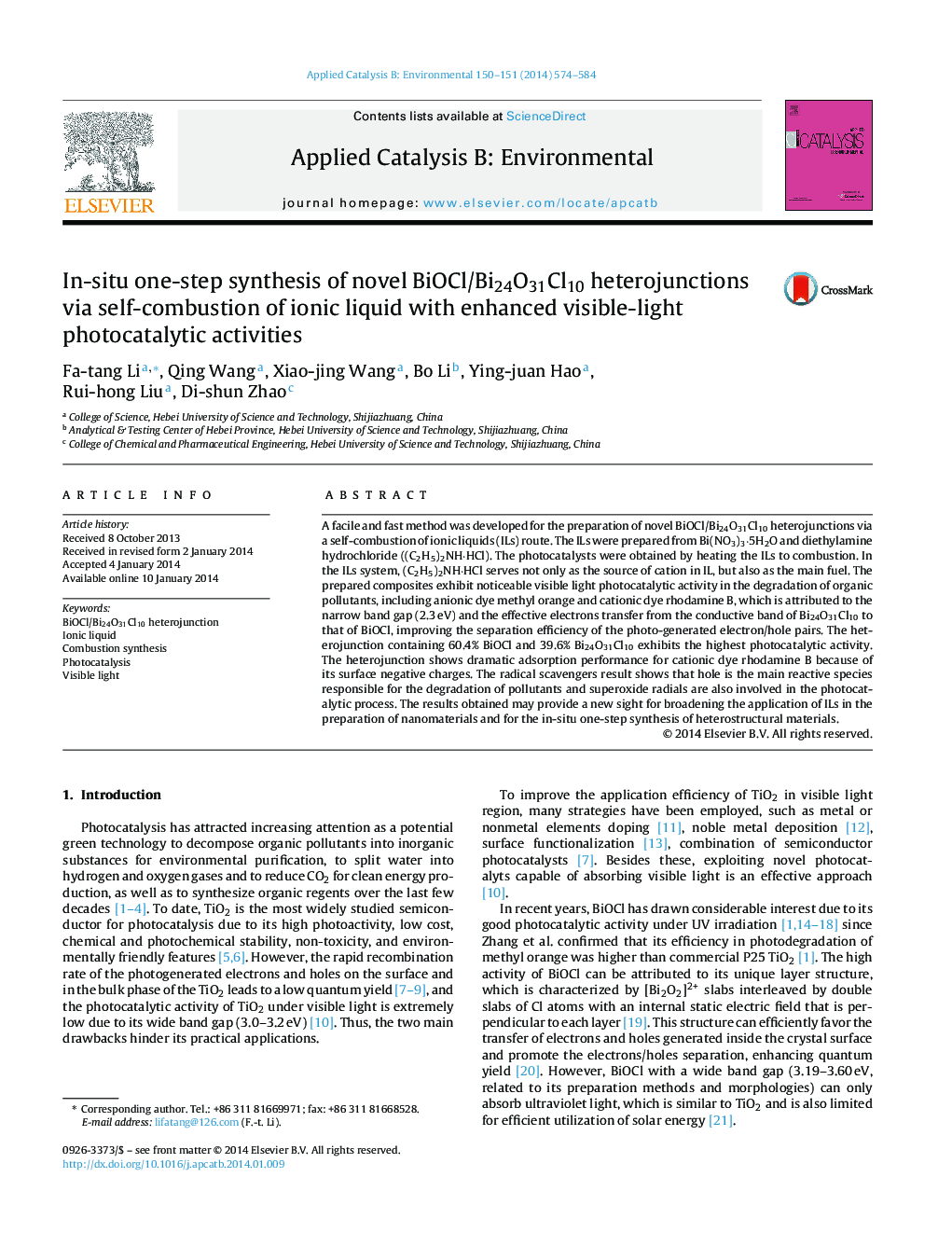| Article ID | Journal | Published Year | Pages | File Type |
|---|---|---|---|---|
| 45965 | Applied Catalysis B: Environmental | 2014 | 11 Pages |
•Bi24O31Cl10/BiOCl composite with high visible light activity was prepared.•Self-combustion of ionic liquid was developed to synthesize the Bi-based composite.•(C2H5)2NH·HCl provides cation for IL and meanwhile serves as the main fuel.•The visible light activity is contributed to the narrow band gap of Bi24O31Cl10.•The reactive species and the mechanism for the enhanced activity were proposed.
A facile and fast method was developed for the preparation of novel BiOCl/Bi24O31Cl10 heterojunctions via a self-combustion of ionic liquids (ILs) route. The ILs were prepared from Bi(NO3)3·5H2O and diethylamine hydrochloride ((C2H5)2NH·HCl). The photocatalysts were obtained by heating the ILs to combustion. In the ILs system, (C2H5)2NH·HCl serves not only as the source of cation in IL, but also as the main fuel. The prepared composites exhibit noticeable visible light photocatalytic activity in the degradation of organic pollutants, including anionic dye methyl orange and cationic dye rhodamine B, which is attributed to the narrow band gap (2.3 eV) and the effective electrons transfer from the conductive band of Bi24O31Cl10 to that of BiOCl, improving the separation efficiency of the photo-generated electron/hole pairs. The heterojunction containing 60.4% BiOCl and 39.6% Bi24O31Cl10 exhibits the highest photocatalytic activity. The heterojunction shows dramatic adsorption performance for cationic dye rhodamine B because of its surface negative charges. The radical scavengers result shows that hole is the main reactive species responsible for the degradation of pollutants and superoxide radials are also involved in the photocatalytic process. The results obtained may provide a new sight for broadening the application of ILs in the preparation of nanomaterials and for the in-situ one-step synthesis of heterostructural materials.
Graphical abstractNovel BiOCl/Bi24O31Cl10 heterojunctions with high visible light photocatalytic activities were one-step prepared via self-combustion of ionic liquid. The ratio of Bi24O31Cl10 to BiOCl can be adjusted by varying the ratio of fuels of (C2H5)2NH·HCl to urea. The photocatalytic mechanism is also proposed.Figure optionsDownload full-size imageDownload as PowerPoint slide
